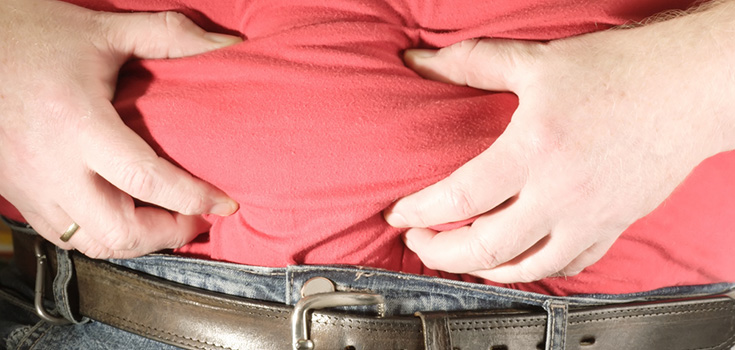Liposuction Not a Permanent Weight Loss Solution | Fat Returns and Relocates

Obesity is a global and nation-wide problem, and everyone knows it. Obesity rates are steadily climbing, and what’s worse is that many people feel powerless when it comes to losing or maintaining weight. Resting at a maintained weight isn’t terribly difficult to do, but it isn’t quite as easy as it used to be either. Psychological and emotional demands are sky high in the society we live in, and we no longer need to exert physical energy for our food. What people may not be realizing fully is that this influx of inactivity in contributing to endless disease. Unfortunately, instead of incorporating a lifestyle change and a society change as a whole, people are turning to weight loss surgery like liposuction as a method of treatment for excess weight.
Liposuction – A Weight Loss Surgery – is More Popular than it Ever Should Be
Liposuction has gained an incredible amount of popularity over the years. Whether the reason be technological advancements, easier surgical procedures, or just a greater awareness through advertising, the core reason for increased liposuction procedures is the same – people are fat and think they need it. Since the American Society for Aesthetic Plastic Surgery began collecting data on the overall number of cosmetic procedures in 1997, the amount of cosmetic procedures went up 162 percent up between that time and 2008. Of course as the population grows, surgical procedures are expected to rise unless significant changes take place.
While liposuction procedures aren’t facing any permanent, continuous decline yet, for the first time in 12 years, it is not at the top of the list for surgical procedures. For the first time in twelve years, breast augmentation surpassed liposuction while liposuction became a very close runner up. In 2008 the number of breast augmentation procedures totaled about 355,671 while liposuction totaled 341,144. These statistics don’t necessarily say anything about the decline of liposuction surgical procedures, but rather that many women feel insecure about their breast size. It isn’t surprising to see how liposuction was bypassed by breast augmentation, as women accounted for almost 92 percent of cosmetic procedures in 2010 and for 309,692 out of the 341,144 liposuction procedures.
Here is a resource to examine cosmetic procedures for each year from 1997 to 2010.
Liposuction Side-Effects | The Relocation of Fat
Researchers from the University of Colorado evaluated the future side-effects of liposuction on 14 healthy women – age 40 on average. These liposuction procedures, however, weren’t meant to shed off pound upon pound of fat. The women weight 138 pounds on average but were simply not happy with their fat allocation and felt disproportionate due to increased fat around the lower abdomen, hips, or thighs. The liposuction only removed about 2.9 pounds on average, or 2.1 percent body fat. The researchers compared the 14 women who had liposuction to a second group of 18 women who had similar fat deposits, but hadn’t undergone the weight loss surgery.
Change was measured in the women’s body fat at six weeks, six months, and one year using MRI and X-ray scans. Unfortunately for the women who made the decision to have the weight loss surgery, one year later they gained the weight back. The fat reappeared primarily in the abdomen area, with a slower reappearance of fat in the thighs. Although a small study, the study shows that weight loss surgery such as liposuction is not the solution to shed excess weight and that the reappearance of fat could be one of liposuctions side-effects. If you continue to live the same lifestyle and don’t incorporate any positive changes, nothing will change in the long run. The only way to keep the fat off forever is to change eating habits and activity levels. It may even be a better idea to undergo hypnosis rather than get the real surgery, as it helped others lose an incredible amount of weight and skips the surgical procedure.
